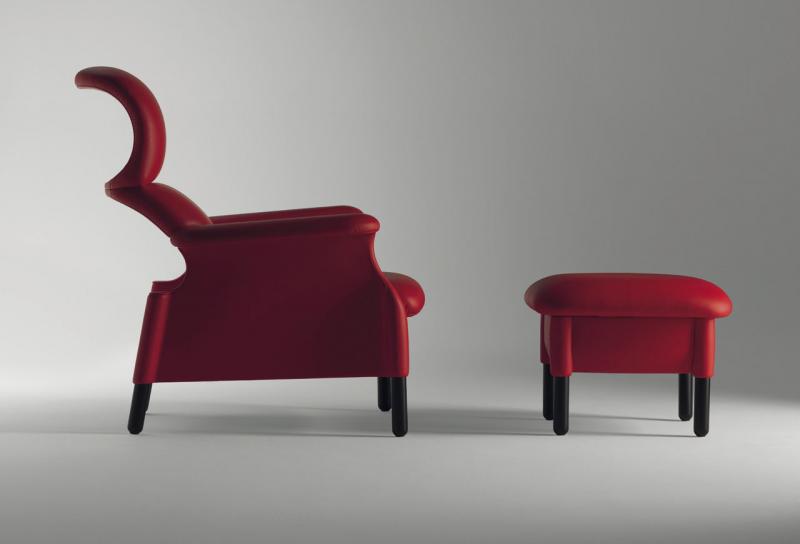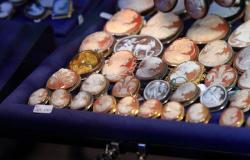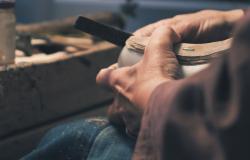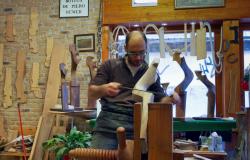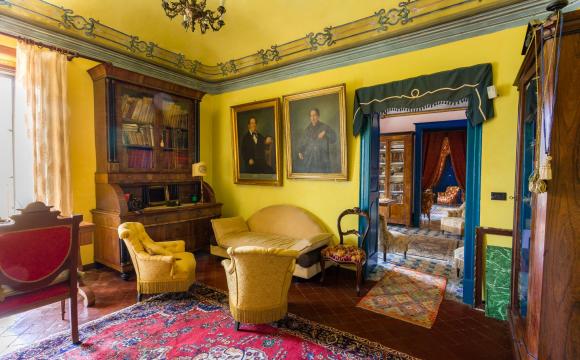In the 1950s Italy became the cradle of modern design, and, since then, its architects and designers have changed the way we decorate our homes. We select three of the most iconic lounge chairs that are still as cutting edge today as four decades ago. Italy is a synonym for modern design. From fashion to cars, from furniture to trains, Made in Italy has come to mean quality products that combine functionality with an elegance and sheer visual beauty that few other countries have been able to replicate.
Italy is a synonym for modern design. From fashion to cars, from furniture to trains, Made in Italy has come to mean quality products that combine functionality with an elegance and sheer visual beauty that few other countries have been able to replicate.
It wasn’t always so, of course. Although Italy had already seen some interesting design experiments in the 1930s, a predominantly poor and agricultural country could not sustain the demand required for local design to soar. Creativity was also stifled by Fascism.
It is only in the Fifties that the equation between Italy and design became firmly established. Those years saw the country emerge from the ravages of the Second World War and find new prosperity through mass-scale production. Italians were hungry for new luxuries and companies strived to serve them with a flood of products—from TV sets to fridges, from motorcycles to typewriters—that were as beautiful as they were useful. Meanwhile, the country’s newfound liberty fed an artistic and intellectual Renaissance that spanned not only fine arts, cinema and literature, but also the nascent field of industrial design.
Italians were hungry for new luxuries and companies strived to serve them with a flood of products—from TV sets to fridges, from motorcycles to typewriters—that were as beautiful as they were useful. Meanwhile, the country’s newfound liberty fed an artistic and intellectual Renaissance that spanned not only fine arts, cinema and literature, but also the nascent field of industrial design.
As a result, the Fifties marked the birth of the Made in Italy. Its icons—the Vespa and Lambretta motorbikes, the Topolino and Cinquecento cars, the Superleggera chair, all became as much a symbol of La Dolce Vita as Sophia Loren or Marcello Mastroianni.
Over the following decades, Italy consolidated this reputation for innovative, elegant design, particularly in furniture, which saw designers such as Gio Ponti, Achille Castiglioni, Ettore Sottsass, Vico Magistretti, Mario Bellini and Gaetano Pesce change the way we think and decorate our homes.
Every area of the house was swept in this revolution and none more so than the living room. Seating was an obsession for many designers of the Fifties, Sixties and Seventies. Their creations were innovative, elegant, sometimes shockingly bold—such as Joe, a baseball glove-shaped sofa that was a tribute to legend Joe di Maggio—but never obvious or boring.
To mark the upcoming Salone del Mobile, the celebrated international furniture exhibition which started in the Fifties and is now at its 48th edition, we have selected three of the very best pieces of seating furniture that have made the history of Italian design.
The next Salone del Mobile will take place in Milan from April 22 to 29.
Up chairs by Gaetano Pesce, 1969
 Curvy, soft, embracing. The Up series—seven chairs of different sizes and shapes designed by architect Gaetano Pesce for C&B Italia (later B&B Italia)—are a triumph of femininity, which has long been a crucial element in the designer’s work.
Curvy, soft, embracing. The Up series—seven chairs of different sizes and shapes designed by architect Gaetano Pesce for C&B Italia (later B&B Italia)—are a triumph of femininity, which has long been a crucial element in the designer’s work.
So it is a bit surprising to discover that Pesce actually started from the opposite concept—that of women’s subjugation across the centuries—when he first designed them in 1969. He wanted his pieces to convey how women had long been victims in a society ruled by men. So much so that, Up5, the most famous piece of the series—a bergere and foot rest set that looks like the furniture equivalent of the Great Mother statues of antiquity, and has often been interpreted as symbolising the link between mother and child—actually represented a woman chained to an iron ball. But the Up series was as revolutionary in the choice of materials, as in its design and social message. For his chairs, Pesce selected the affordable, flexible expanded polyurethane foam, covered by a synthetic jersey. It was a daring innovation at the time—but then Pesce’s fundamental belief is that without innovation, there is no future.
But the Up series was as revolutionary in the choice of materials, as in its design and social message. For his chairs, Pesce selected the affordable, flexible expanded polyurethane foam, covered by a synthetic jersey. It was a daring innovation at the time—but then Pesce’s fundamental belief is that without innovation, there is no future.
The Up armchairs—of which the prettiest is probably the small, perfectly round Up1—are still manufactured by B&B Italia and come in a choice of six colours (black, dark green, red, yellow, blue and a stripy red and beige version). For more information, visit: www.bebitalia.it, www.gaetanopesce.com.
Sanluca armchair by Achille and Pier Giacomo Castiglioni, 1960
 The three Castiglioni brothers—Livio, Pier Giacomo and Achille— were leaders in the development of Made in Italy design in the 1950s and 1960s. Together, they created some of the most extraordinary pieces of modern italian furniture, such as the elegant Arco floor lamp, the tractor-seat-inspired Mezzadro stool, and, most of all, the Sanluca armchair.
The three Castiglioni brothers—Livio, Pier Giacomo and Achille— were leaders in the development of Made in Italy design in the 1950s and 1960s. Together, they created some of the most extraordinary pieces of modern italian furniture, such as the elegant Arco floor lamp, the tractor-seat-inspired Mezzadro stool, and, most of all, the Sanluca armchair.
Sanluca, designed in 1960 by Achille and Pier Giacomo, is a modern take on the traditional lounge chair, the physical embodiment of an oxymoron.
Both rigid and sinuous, it is at the same time familiar—there’s the ample seat, the wide arm rests, the comfy head rest—and completely innovative, with its ergonomic curves (which have varying thicknesses to offer the body perfect shelter) replacing the heavy padding of old-fashioned designs. The chair’s manufacturing process was also unusual. Sanluca was designed to be made in three separate pieces—seat, back and head rest—each with a pressed metal frame (now a plywood frame) stuffed with polyurethane foam and covered with leather. But when the pieces were screwed together to assemble the chair, they melded into a seamless visual unity.
The chair’s manufacturing process was also unusual. Sanluca was designed to be made in three separate pieces—seat, back and head rest—each with a pressed metal frame (now a plywood frame) stuffed with polyurethane foam and covered with leather. But when the pieces were screwed together to assemble the chair, they melded into a seamless visual unity.
The Sanluca chair has been around for the last 49 years, but has been manufactured by several companies over time—Gavina launched it, then Knoll took over (1969), followed by Bernini (1990) and, latest in the series, Poltrona Frau (2004).
Poltrona Frau now offer Sanluca in a choice of three leathers and a wide range of colours. The Luca footrest, designed by Achille Castiglioni in 1991 to complement the armchair, is also available. For more information, visit www.poltronafrau.com, www.achillecastiglioni.it.
Elda swivel chair by Joe Colombo, 1963
 Despite the American-sounding name, Joe Colombo was as Italian as it gets (his real name was Cesare). He was a bright, if fleeting star in the Italian design firmament. He died very young (aged 41), but, during the course of his brief career, he managed to win two Compasso D’Oro (for his Spider lamp and air conditioner Candyzionatore), one gold medal (for his Acrilica lamp) at the XIII Triennale, and two International Design Awards for his Coupe and Spring lamps, among others.
Despite the American-sounding name, Joe Colombo was as Italian as it gets (his real name was Cesare). He was a bright, if fleeting star in the Italian design firmament. He died very young (aged 41), but, during the course of his brief career, he managed to win two Compasso D’Oro (for his Spider lamp and air conditioner Candyzionatore), one gold medal (for his Acrilica lamp) at the XIII Triennale, and two International Design Awards for his Coupe and Spring lamps, among others.
Elda is perhaps his most famous piece of seating furniture. It is a gigantic swivel chair, which is thought to be the first ever made with a self-supporting fibreglass frame. Stuffed with expanded polyurethane foam and covered in leather, the huge, shell like body is lined with seven sausage-like cushions, wrapping people in a deep, comfortable embrace. Designed in 1963, Elda was first manufactured in 1965 by Comfort Fratelli Longhi but its look was so avant-garde that it was picked as the seat of choice for science fiction series Space 1999.
Designed in 1963, Elda was first manufactured in 1965 by Comfort Fratelli Longhi but its look was so avant-garde that it was picked as the seat of choice for science fiction series Space 1999.
Today, Fratelli Longhi still manufacture Elda to the original design with a completely hand-made process. The structure is available in black and white, and the upholstery comes in both leather and fabric. For more information, visit www.longhi.it or www.joecolombo.com.
